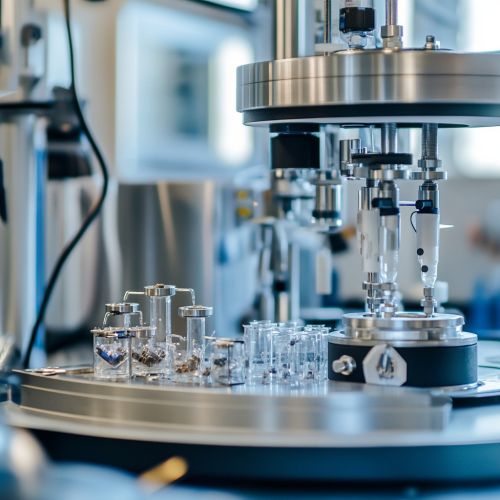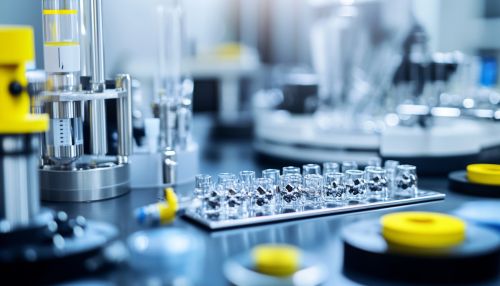Advancements in Oxygen Evolution Reaction and Catalyst Research
Introduction
The oxygen evolution reaction (OER) is a critical electrochemical process that plays a pivotal role in various energy conversion technologies, such as water splitting, metal-air batteries, and regenerative fuel cells. The efficiency of these technologies is often limited by the sluggish kinetics of the OER, which involves the oxidation of water to oxygen gas. As a result, significant research efforts have been devoted to developing effective catalysts that can lower the overpotential and enhance the reaction rate. This article delves into the recent advancements in OER and catalyst research, exploring the fundamental mechanisms, innovative materials, and future directions in this field.
Fundamental Mechanisms of OER
The OER involves the transfer of four electrons and the formation of an O=O bond, making it a complex process with multiple reaction pathways. The reaction typically occurs in alkaline or acidic media, with the following general steps:
1. **Adsorption of Hydroxide Ions (OH⁻) or Water Molecules (H₂O)**: The initial step involves the adsorption of reactant species onto the catalyst surface. 2. **Formation of Intermediate Species**: This step includes the formation of surface-bound intermediates such as M-OH, M-O, and M-OOH, where M represents the metal site on the catalyst. 3. **Oxygen-Oxygen Bond Formation**: The critical step where the O=O bond is formed, leading to the release of oxygen gas. 4. **Desorption of Oxygen**: The final step involves the desorption of oxygen from the catalyst surface, regenerating the active site.
The efficiency of the OER is largely determined by the binding energies of these intermediates, which can be modulated by the choice of catalyst material and its electronic structure.
Catalyst Materials for OER
Transition Metal Oxides
Transition metal oxides, such as RuO₂ and IrO₂, are among the most effective catalysts for OER due to their excellent conductivity and stability. However, their high cost and scarcity limit their widespread application. Recent research has focused on developing earth-abundant alternatives, such as Co₃O₄, NiO, and MnO₂, which offer a balance between performance and cost.
Perovskite Oxides
Perovskite oxides, with the general formula ABO₃, have emerged as promising OER catalysts due to their tunable electronic properties and structural flexibility. By substituting different elements at the A and B sites, researchers can optimize the catalytic activity and stability. Notable examples include La₀.₅Sr₀.₅Co₀.₈Fe₀.₂O₃₋δ and Ba₀.₅Sr₀.₅Co₀.₈Fe₀.₂O₃₋δ.
Metal-Organic Frameworks (MOFs)
MOFs are crystalline materials composed of metal ions coordinated to organic ligands, forming porous structures. Their high surface area and tunable pore size make them attractive for OER applications. Recent studies have demonstrated that incorporating active metal sites, such as Co or Ni, into MOFs can significantly enhance their catalytic performance.
Layered Double Hydroxides (LDHs)
LDHs are a class of anionic clays with a brucite-like structure, consisting of positively charged metal hydroxide layers and interlayer anions. They have shown great promise as OER catalysts due to their high surface area, tunable composition, and ability to accommodate various metal cations. NiFe-LDHs, in particular, have been extensively studied for their superior catalytic activity.


Recent Advances in Catalyst Design
Nanostructuring and Morphology Control
Nanostructuring catalysts can significantly enhance their surface area and active site availability, leading to improved OER performance. Techniques such as electrodeposition, hydrothermal synthesis, and sol-gel processing have been employed to create nanostructured catalysts with controlled morphologies, such as nanowires, nanosheets, and hollow spheres.
Doping and Alloying
Doping involves introducing foreign atoms into the catalyst lattice to modify its electronic structure and catalytic properties. For instance, doping NiO with Fe can enhance its OER activity by optimizing the binding energies of reaction intermediates. Similarly, alloying different metals can create synergistic effects that improve catalytic performance. NiFe alloys, for example, have shown remarkable OER activity in alkaline media.
Defect Engineering
Defects, such as vacancies and dislocations, can play a crucial role in enhancing the catalytic activity of materials. Introducing oxygen vacancies in metal oxides can increase their conductivity and active site density, thereby improving OER performance. Advanced characterization techniques, such as XPS and TEM, are often used to study and control defect structures in catalysts.
Interface Engineering
Creating heterostructures with well-defined interfaces can enhance charge transfer and catalytic activity. For example, combining metal oxides with conductive substrates, such as graphene or carbon nanotubes, can improve electron transport and stability. Interface engineering also allows for the creation of synergistic effects between different catalytic phases, leading to enhanced OER performance.
Challenges and Future Directions
Despite significant progress, several challenges remain in the development of OER catalysts. These include improving the stability of catalysts under harsh electrochemical conditions, reducing the cost of catalyst materials, and understanding the fundamental mechanisms at play. Future research directions may focus on:
- **In-situ Characterization**: Developing advanced in-situ techniques to study the dynamic behavior of catalysts during the OER process. - **Computational Modeling**: Utilizing computational methods, such as DFT, to predict and design new catalyst materials with optimal properties. - **Scalable Synthesis**: Developing scalable and cost-effective synthesis methods for producing high-performance OER catalysts. - **Integration with Devices**: Integrating OER catalysts into practical devices, such as electrolyzers and fuel cells, to assess their real-world performance and durability.
